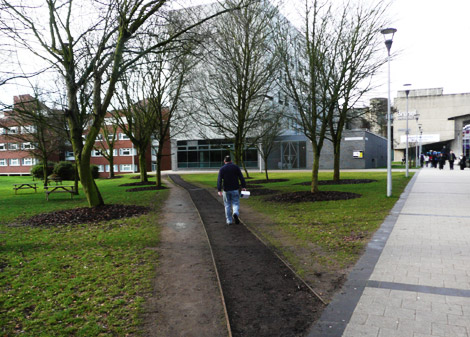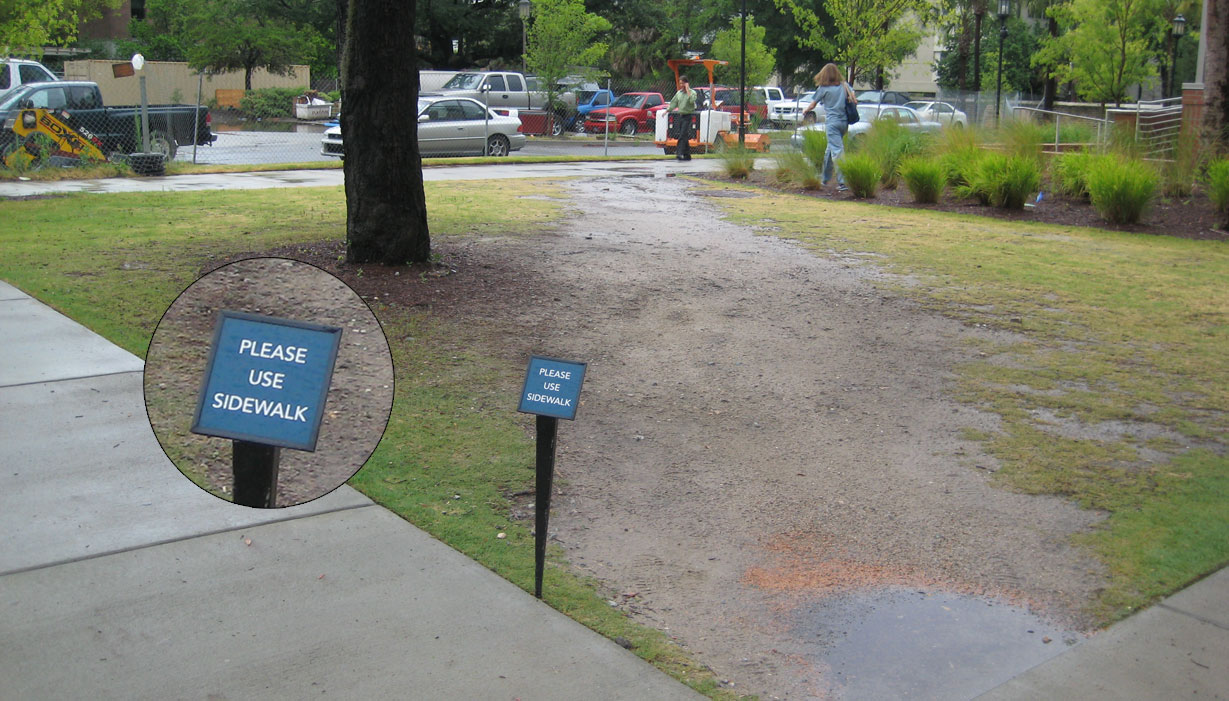Designing Social Interfaces defined the term "pave the cowpaths" as recognizing and formalizing existing user behavior instead of creating something and then trying to force users to adjust their behavior. Both this book and my economics professor used the same example to illustrate this concept: keeping students off the grass. At one school, the administrators waited to see how students traveled through a forest to get to campus. After a year, the school paved the most frequently traveled paths, which they measured via the path's depth and width. This not only made it easier for the students who walked that way but also encouraged other students to use this path, which was now easier to walk on than tromping through the leaves and ducking under branches.
The other school tried to design a structure and force students to adapt their behavior. This school had a circle like our Woodburn Circle with a patch of grass in the middle, and students walked across the grass to get to buildings on the other side of the circle. But instead of watching where the students walked and then paving sidewalks, the college put bushes in front of every building. Naturally, the students walked around them and across the grass. Then the college put benches in front of the bushes (maybe to distract students?), but that led to students using the benches to take running jumps over the bushes and onto the grass. Had the school tried to adapt to the students' preexisting behavior, it might have better encouraged students to use designated sidewalks and avoided the extra costs of trying to change behavior patterns already established.
Our handbook applies this concept of "paving the cowpaths" to websites by encouraging readers to adapt their sites to whatever users discover is "the best and highest use of your interface" (18). Paving the cowpaths, in this sense, means adapting to user innovation, and several companies have succeeded because they did adapt their sites to user behavior, as the TEDtalk about Twitter we watched last week illustrated. This concept also shows how collaborative communities (aka "the Global Brain") can often trigger creativity and productivity more effectively than a centralized system or a strict hierarchy. Users find new ways to use websites in ways that satisfy their needs, and when site owners formalize those behaviors, they appeal to both existing and potential users by widening the scope and ease of possible choices.
References
Crumlish, Christian, and Erin Malone. Designing Social Interfaces: Principles, Patterns, and Practices for Improving the User Experience. Sebastopol, CA: Yahoo! Publisher, 2009. Web.

